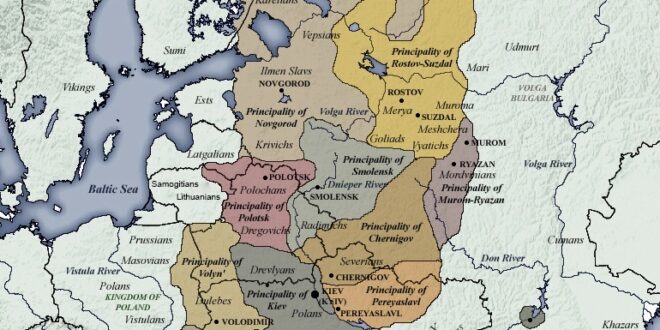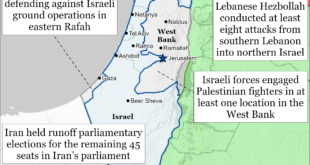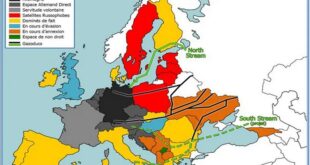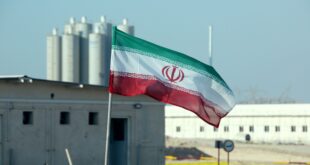Who hasn’t thought in terms of national identities, stereotypical and misleading as they are? He’s an American, someone might say, or she’s French, or those folks over there are Japanese, and so on.
We know such identities blur and dissolve upon closer inspection. There turn out to be many different kinds of Americans. There are Red Americans and Blue Americans, for instance, and White Americans and Black Americans, rich Americans and poor Americans, young Americans and old Americans, religious Americans and secular Americans, and on and on. And there no doubt are as many kinds of French, or Japanese, and so on.
The question is whether a national identity can contain all of its sub-identities, and keep from flying apart. Some even fear an American breakup over differences between Red and Blue states. What then can be said about Ukrainian identity? The following historical sketch may provide some clues.
The earliest accounts of the people called Russians–the Rus–feature stories of Nordic (Varangian or Swedish) princes and Slavic cities, particularly Novgorod and Kiev. Prince Rurik established a dynasty ruling Novgorod, and his successor Oleg captured Kiev in the late 9th century. The Rurik princes made Kiev their capital and accepted conversion to Orthodox Christianity headed by the Patriarch in Constantinople. The Rus people came to be distinguished as Eastern Slavic speakers, in contrast to the Poles, Czechs, Slovaks, Coatian, Serbs, Bulgarians, and others, who spoke Western and Southern Slavic languages.
Medieval Kievan Rus lasted for 400 years, until it was overthrown and occupied by Mongol invaders in the 13th century. 200 years later, in 1480, Ivan, the Grand Prince of Moscow, finally defeated the last of the Mongols, with the help of the Lithuanians. But it was the Lithuanians, not Ivan, who swept on to conquer the remaining lands of the Eastern Slavs, including what is now Belorussia and Ukraine down to the Black Sea. They choose to solidify their conquests by a dynastic union in 1385, not with the lands of Novgorod and Moscow newly liberated from the Mongols, but with the Kingdom of Poland, a move sealed by their conversion to the Catholic, not the Orthodox, faith.
Ukraine became a pawn in the slow-motion merger of Lithuania and Poland. As part of their complete union under the Treaty of Lublin in 1569, all of Ukraine was transferred to the Kingdom of Poland. Eastern Ukraine was later wrested from Poland by Russia after rebelling cossacks in the mid-17th century turned to Moscow for help. But Western Ukraine remained a part of Poland until the country was partitioned at the end of the 18th century, at which point a large part of West Ukraine passed not to Russia, but to what became Austria-Hungary. The remainder of Ukraine was brought under Russian rule, which continued throughout most of the Tsarist and Soviet years, until 1991, when all of Ukraine found itself granted its independence, more or less by default, in the wake of the fall of the Soviet Union. A Ukrainian Peoples’ Republic had briefly emerged in the confusion following 1917 Russian revolutions but was quickly swallowed back into the Soviet Union, while the Austrian part of Western Ukraine had been incorporated into the reborn Polish state in the 1920s and 30s.
The intervention by the Lithuanians in the 14th century, which put most of Ukraine under Polish-Lithuanian rule for about 500 years, had an impact that 200 subsequent years of Russian rule has been unable to erase. A largely Catholic Polish-Lithuanian aristocracy ruled over a largely Orthodox Ukrainian peasantry. Ukrainian leaders, however, sought parity with Poles and Lithuanians, in part to gain the democratic liberties and privileges enjoyed by the Polish and Lithuanian nobility. All this stood in stark contrast to the bleak offerings of tyrannical Tsars like Ivan the Terrible in Muscovy. The political and cultural drift to the West among even Orthodox Ukrainians became evident in the establishment of the Uniate Church in 1596, by which many Orthodox groups, especially in Western Ukraine, accepted the authority of the Pope but otherwise kept Orthodox rituals and practices.
The reluctance of the Poles and Lithuanians to share their privileges and freedoms and make the Ukrainians equal partners in the Commonwealth proved to be the undoing of the Commonwealth. The massive cossack rebellion in Ukraine in 1648, led by Bogdan Hmelnytsky, turned to Russia only after failing to reach an accommodation with the Poles and Lithuanians over their grievances. The result was the loss of East Ukraine to Russia, confirmed by the Treaty of Andrusovo in 1667. But West Ukraine not only remained in the Polish Lithuanian Commonwealth until the end of the 18th century, but the core of it (including what Polish speakers call the city of Lwow, which Germans call Lemburg, and Ukrainians call Lviv) continued as part of Austria-Hungary, before becoming part of a newly reestablished Polish State between the world wars. It was finally included, for the first time, into the Russian-dominated Soviet Union after 1945.
Today West Ukrainians are predominantly Ukrainian speaking and largely Western-oriented. Their history and geography have given them more experience of the relatively open societies of the West than people in East Ukraine. They are more likely to be nationalists and anti-Russian, with more than a tinge of fascism, as exhibited by the continued popularity of the WW II pro-Nazi collaborator, Stepan Bandera. East Ukraine–the lands east of the Dnieper River and along the Black Sea coast, including Odessa–is by contrast largely Russian speaking, and perhaps more firmly Orthodox and more fearful of European invasion than it is of dominance from Moscow. It was here, after all, in the Donbass region, that pro-Russian resistance to the 2015 coup which overthrew the pro-Russian Ukrainian government hardened into open rebellion and secession, which led to the current Ukrainian War.
If the differences between West and East Ukraine are as deep as this history suggests, then two Ukraines seem the likely outcome to the story: an independent nation of West Ukraine, and a Russian province of East Ukraine, roughly divided along the Dnieper river and splitting the current country in half. But if the commonality of Ukrainian culture is able to transcend this divisive historical material, then a Ukraine uniting West and East would seem to be the logical outcome.
It may be that the heroism of President Zelensky in the face of the Russian invasion, as well as his leadership, is sparking the determined resistance by Ukrainians in the opening phases of the war, could well portend a symbolic rebirth of the country sufficient to establish a national identity which transcends the narrower concerns, fears, and desires which have long dominated West and East Ukraine. Whether Zelenski continues to support violent resistance to Russia, is martyred, goes into exile, or adapts a non-violent or Gandhian approach to resistance, will largely determine the long-run course of events. All that remains to be seen. In any event, however, the deep divisions described here need to be resolved in a broader vision for a Ukrainian identity to stabilize and flourish. What seems clear is that nothing less is required to establish a coherent, Ukrainian nation.
 Eurasia Press & News
Eurasia Press & News




